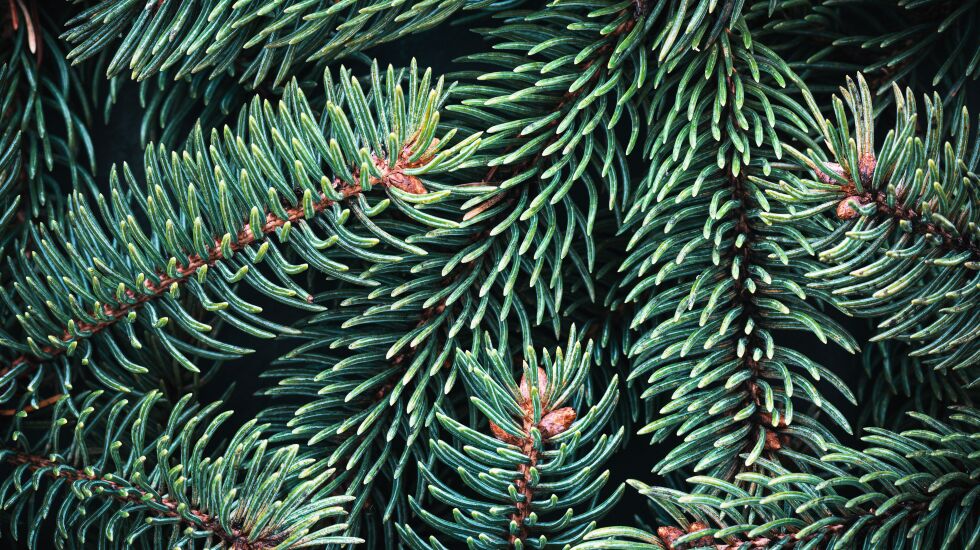
Christmas trees dressed in twinkling lights and colorful ornaments, for those who celebrate, bring a special kind of magic inside a home during the holiday season.
For some people, however, Christmas trees — real or fake — may introduce other, less pleasant feelings thanks to tiny, mostly invisible allergens that lurk inside them.
If you tend to develop a runny nose, watery eyes, sneezing, coughing or itchy skin, or feel like your asthma is aggravated, you might be experiencing what allergists call “Christmas tree syndrome.”
Dust, insect droppings, pesticide, mold and varying types of pollen might be to blame.
What is Christmas tree syndrome?
A person is considered to have Christmas tree syndrome when they experience typical allergy symptoms like a runny nose, congestion and sneezing when around their real or fake tree that could take weeks to resolve, according to Dr. Zachary Rubin, a pediatric allergist based in Oak Brook.
Most people who experience these symptoms likely have an existing allergy to a specific allergen in their tree, but even those without a history of allergies or asthma can come down with a case of Christmas tree syndrome, Rubin said.
Why your real Christmas tree may irritate you
It’s relatively uncommon to be allergic to pine trees directly, but they contain two main allergens of concern: pine nuts and pine pollen, according to the American College of Allergy, Asthma and Immunology.
Exposure to pine nuts in a Christmas tree generally pose a low risk for those with a food allergy to them, Rubin said, because they typically only cause allergic reactions once eaten. That said, anaphylaxis, or a life-threatening allergic reaction, to pine nuts is still possible.
Pine pollen isn’t known to cause intense allergic reactions — at least not during the winter because pine trees pollinate in the spring — so the bigger concern comes from other pollen, like ragweed and grass that pollinate in the fall and hitchhike on pine trees before they’re cut down for the holiday season, Rubin said.

The most likely culprit behind your allergy symptoms might actually come from the piney scent that most people associate with Christmas time. Chemical compounds called terpenes found in pine tree sap are responsible for this classic smell but can inflame your airways, giving you a runny and stuffy nose, as well as a cough, Rubin said, regardless of whether you’re allergic.
“Your immune system might see these chemicals as a foreign substance and kickstart different defense mechanisms such as creating more mucus to trap those particles from entering your body,” said Rubin.
Real Christmas trees may also contain pesticides, dust, insect droppings and mold that may trigger minor to severe allergic reactions.
A 2011 study published in the journal Annals of Allergy, Asthma and Immunology found that a small sample of Christmas trees harbored about 50 different types of mold. The SUNY Upstate Medical University researchers also cited a 2007 study that found that levels of airborne mold spores in an apartment increased more than six-fold two weeks after residents brought a live Christmas tree into their home.

A sensitivity to mold in your Christmas tree is much more likely if you have an allergy to it, Rubin said.
You could also develop a rash similar to one from poison ivy a day or two after touching your real Christmas tree because its sticky sap contains a substance called rosin, or colophony, that can irritate your skin, Dr. Kara Wada, an allergy specialist at Ohio State University Wexner Medical Center wrote in a blog post last year.
Some people with sensitive skin may also develop itchy spots from the pine needles poking their skin, Wada said.
Why your fake Christmas tree may irritate you
Fake Christmas trees are more likely to contain dust mites, insect droppings and possibly mold, Rubin said, depending on how you store your tree. Stuffing your tree inside a garbage bag, for example, may invite critters to crawl inside or promote mold growth if your attic or storage closet is warm and humid.
Luckily, you don’t have to worry about pollen, pesticides or scent issues with fake trees.
How to feel relief from Christmas tree syndrome
If you have watery eyes, itching, sneezing or a runny nose, an oral antihistamine like Zyrtec or Claritin might relieve your symptoms most quickly, Rubin said.
If you’re struggling with congestion, cough or post nasal drip for several days, Rubin suggests using an over-the-counter nasal steroid spray such as Flonase. Keep in mind that these sprays may take one to two weeks to provide relief. You can also apply a hydrocortisone cream for rashes.
Showering every night could help wash away allergens that attached to your skin or hair while around your tree, Rubin added.
Nasal irrigation with a neti pot or saline rinse bottle could help too, he said.
How do you prevent Christmas tree syndrome?
Here are some expert-backed tips on avoiding Christmas tree syndrome.
Clean your tree before bringing it inside your home: You can rinse your real or fake tree in the bathtub, as long as there are no electronics attached to it. But Rubin suggests doing this outside instead with a hose or leaf blower to keep allergens at bay. If you can’t go outside, wear a high quality mask over your nose and mouth, as well as gloves, to reduce irritation while cleaning indoors.
Store your fake tree in an airtight container: Mold can grow wherever there’s humidity, so storing your fake tree in an airtight container can prevent this, especially if locked in a steamy attic throughout the year. Proper storage will also reduce dust mites. Rubin recommends scanning your tree every four to six months to ensure there’s no mold or insect droppings, in which case you may want to consider tossing it in the trash.
Clean tree decorations, too: Ornaments and other decorations can collect dust as well, Rubin said, so don’t forget to clean those, preferably with a wet cloth so allergens don’t aerosolize in your home.
Change your clothes right away: “Put your clothes directly into a hamper after handling your Christmas tree, ideally outside your bedroom, because you don’t want to track allergens where you spend most of your time,” Rubin said.
Run an air purifier near your tree: An air purifier will help to soak up some floating allergens in the air you’re breathing.
Consider less decorations or an outdoor tree: If your allergy symptoms are severe, you might want to consider minimizing holiday decorations in your home. Instead, focus on the outside of your home — and maybe bring your tree outdoors as well, or switch to a fake one if your real one is too problematic.
Toss your real tree soon after the holiday is over: A decomposing tree could pose a mold issue over time, Rubin said.
Read more at usatoday.com







